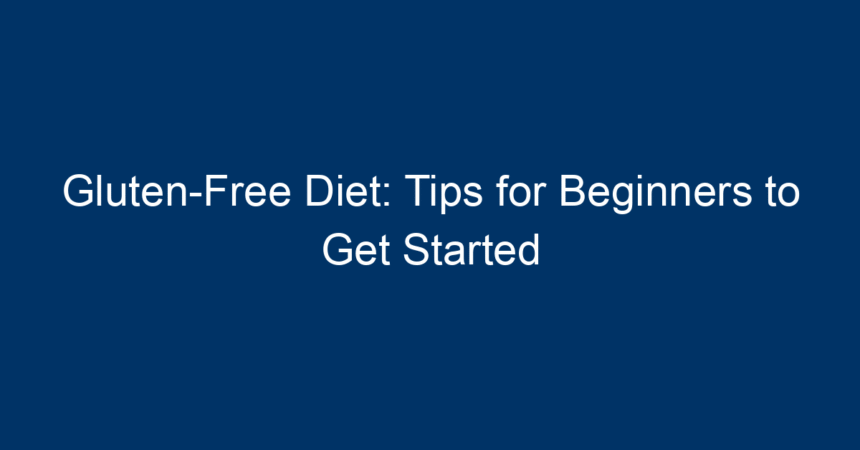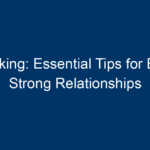The trend of gluten-free diets has surged in popularity in recent years. Whether due to health conditions like celiac disease, gluten sensitivity, or simply a desire for a healthier lifestyle, more people are choosing to eliminate gluten from their diets. If you’re a beginner looking to explore the world of gluten-free eating, this comprehensive guide will provide you with actionable tips, helpful insights, and the necessary knowledge to thrive on a gluten-free diet.
Understanding Gluten
Before diving into the practical aspects of a gluten-free diet, it’s essential to understand what gluten is. Gluten is a group of proteins found in wheat, barley, and rye. It gives bread its chewy texture and helps it rise. However, for people with celiac disease or non-celiac gluten sensitivity, gluten can trigger adverse reactions that affect health and well-being.
Why Go Gluten-Free?
Many individuals adopt a gluten-free diet for several reasons, including:
- Celiac Disease: An autoimmune disorder where ingesting gluten leads to damage in the small intestine.
- Non-Celiac Gluten Sensitivity: Individuals experience gastrointestinal symptoms, fatigue, and other issues after consuming gluten, but do not have celiac disease or a wheat allergy.
- Wheat Allergy: Some individuals are allergic to proteins found in wheat, prompting the need for a gluten-free diet.
- Health Trends: Many people believe that cutting out gluten can lead to better overall health, more energy, and even weight loss.
Getting Started with a Gluten-Free Diet
Starting a gluten-free diet may seem daunting, but with the right approach, it can be manageable and enjoyable. Here are some tips to help you transition smoothly.
1. Educate Yourself
Knowledge is power. Familiarize yourself with what foods contain gluten and which ones are naturally gluten-free. Here are common sources of gluten:
- Wheat Products: Bread, pasta, cereals, and pastries
- Grains: Barley, rye, and their derivatives
- Processed Foods: Sauces, dressings, and even some beverages may contain hidden gluten
Gluten-Free Alternatives
Make a list of gluten-free grains to embrace in your diet, including:
- Rice
- Corn
- Quinoa
- Millet
- Sorghum
2. Read Labels
Once you start your gluten-free journey, reading food labels becomes a crucial part of grocery shopping. Always check for these key phrases:
- Gluten-Free: This indicates that the product meets FDA guidelines for gluten-free labeling.
- Wheat-Free: This does not necessarily mean gluten-free, as other grains can still contain gluten.
Be vigilant and look for potential sources of cross-contamination, especially in processed or pre-packaged foods.
3. Plan Your Meals
Meal planning is a cornerstone of any successful dietary transition, especially a gluten-free diet. Consider these steps:
- Create a Weekly Menu: Outline breakfast, lunch, dinner, and snacks for the week.
- Batch Cooking: Consider preparing meals in bulk and freezing portions for convenience.
- Explore New Recipes: There are countless gluten-free recipes available online. Experiment with new dishes to keep meals exciting.
Practical Gluten-Free Cooking Tips
Cooking gluten-free doesn’t need to be more complicated than traditional cooking. Here are some techniques for preparing delicious gluten-free meals.
1. Stock Your Pantry
Make sure to have gluten-free staples readily available:
- Gluten-Free Flour: A mix of almond, coconut, and rice flour can serve various purposes, from baking to thickening sauces.
- Beans and Legumes: High in protein and fiber, they make excellent staples for salads and stews.
- Nut Butters: Great for snacking and adding protein to smoothies.
2. Modify Recipes
Many traditional recipes can be easily adapted. Whether it’s a pasta dish or dessert, replacing wheat-heavy ingredients with gluten-free alternatives can lead to delicious outcomes.
3. Experiment with Seasonings
Gluten can often hide in seasonings and sauces. Opt for fresh herbs, spices, and gluten-free condiments to enhance flavors without compromising your diet.
4. Use Kitchen Gadgets
Investing in a few kitchen gadgets can make your cooking experience much more enjoyable. Consider:
- Blender: For smoothies and purees.
- Food Processor: Helps with making gluten-free flour blends or dips.
- Slow Cooker: Perfect for hands-off cooking, especially soups and stews.
Eating Out on a Gluten-Free Diet
Dining out can pose challenges, but it can certainly be done safely with a little caution. Here are some tips to enjoy social outings while adhering to a gluten-free diet.
1. Research Restaurants
Before heading out, check online to find restaurants that offer gluten-free options. Many establishments now cater to gluten-free diners, but it’s always helpful to have some options in mind.
2. Communicate Clearly
When ordering, communicate your dietary needs clearly to the waiting staff. Let them know about your gluten intolerance to avoid cross-contamination.
3. Choose Wisely
Opt for simple dishes that are less likely to contain gluten. Grilled meats, fish, fruits, and vegetables are usually safer options than breaded or sauced items.
Support and Resources
Transitioning to a gluten-free diet can be easier with support. Here are some resources to consider:
1. Online Communities
Join gluten-free groups on social media or forums where you can share experiences, recipes, and tips with like-minded individuals.
2. Gluten-Free Blogs and Websites
Many experts and enthusiasts dedicate their platforms to gluten-free living, offering recipes, product reviews, and lifestyle tips.
3. Consult Add a Nutritionist
If you’re experiencing challenges, consider consulting a registered dietitian who specializes in gluten-free eating to create a personalized plan.
Conclusion
Adopting a gluten-free diet can be an enriching and health-promoting experience. With this guide, you’re well-equipped to navigate the transition and embrace a new way of eating. Remember, the key to success is knowledge, planning, and a little creativity in the kitchen.
Start small, seek support, and most importantly, enjoy the journey of discovering all the delicious gluten-free foods available. Whether you’re personally affected by gluten or simply exploring its benefits, the gluten-free diet offers a variety of health benefits. Take these tips to heart, and you’ll find that living gluten-free can be satisfying and enjoyable!
Feel free to share your experiences or ask any questions on your gluten-free journey. Happy eating!




